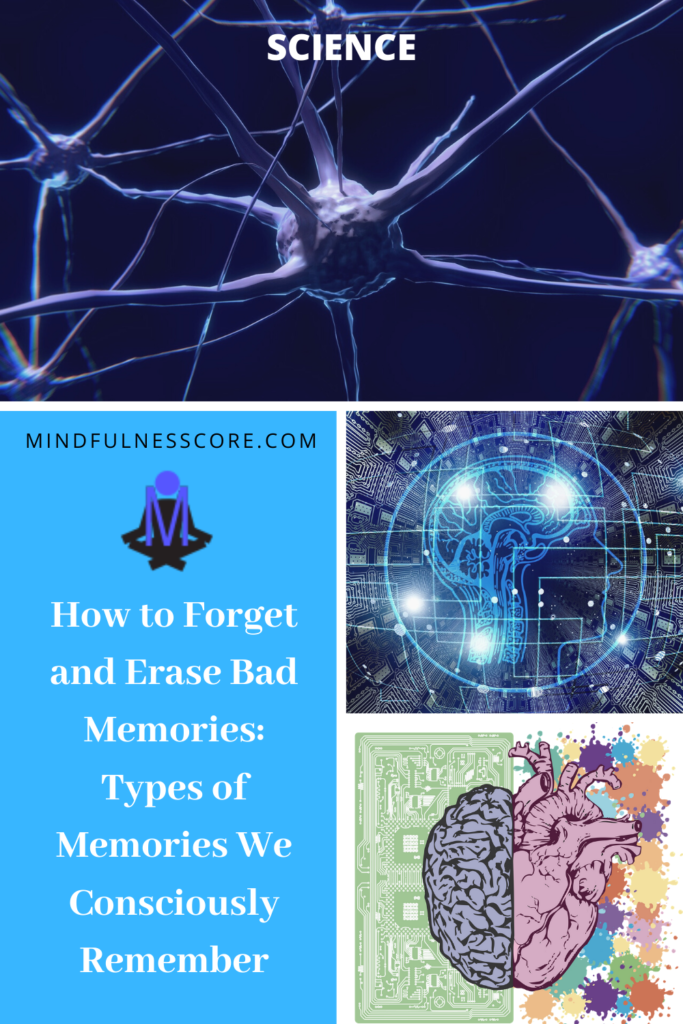How to Forget and Erase Bad Memories: Types of Memories We Consciously Remember
As of the 21st century, the world of medicine and health has been thriving splendidly, especially when the matter at hand is the disclosure of an inhibitory memory circuit that can prompt novel medical treatments for moderate to severe disorders of the mind, such as post-traumatic stress disorder, or what we more commonly refer to as PTSD.
We all are aware of the phenomenon that in order to recall something that lies in our subconscious or even our unconscious minds and bring it to our conscious mind, we need to forget that memory or recollection. Because let us be real: how can we remember something after some time, if we never pushed it out of our minds and forgot it in the first place? According to examinations and researches that have been conducted as of late, it has been demonstrated that when the cerebrum of the brain is instructed to recover information and data that has been recently encoded in the brain, it smothers the data that was established previously, especially if it is somehow related to the new information being stored. This takes place so that the old information does not meddle with the procedure of recalling the newer information that has been stored.
As of now, a group of analysts and researchers from Europe is conducting studies left and right, and these findings have helped majorly in distinguishing a neural pathway that instigates the act of forgetting something. This is done by using various methods to effectively eradicate any possibility of bringing back recollections that could harm the mental state of a person in any way. It is quite possible that in the long run, these discoveries be used to help those who are suffering, and even lead to novel medications for conditions, for example, post-traumatic stress issues (PTSD).
WHAT IS THE BIOLOGY BEHIND BRAINSW NEURAL CIRCUITS?
Since the early years of the 1950s, humans have known thanks to a number of researches conducted that a cerebrum structure that we all refer to as the hippocampus is essential when it comes to the formation and development of memories, and even their recovery and retrieval when the occasion calls for it. The consequent work done by making use of numerous present-day methods has uncovered a lot of data about the fundamental cell components. The hippocampus actually consists of neural circuits that circle through three of its sub-areas – the dentate gyrus and the CA1 and CA3 regions – and it is broadly accepted all over the world that recollections are structured by the fortifying and debilitating of synaptic associations that occur within these neural circuits.
From the dentate gyrus, which is another name for the hippocampus, the formation of new episodic memories takes place, along with the spontaneous exploration of novel environments and a number of other functions. This hippocampal formation also consists of supposed mossy filaments and fibers, which structure the fundamental “input” to the hippocampus. This is done by transferring information related to the sensory organs from an upstream area we refer to as the entorhinal cortex first to CA3 and after that onto CA1. It is believed by many that the CA3 area is the area responsible for the integration of the data to encode, store, and recover new recollections, before moving them to the cerebral cortex of the brain, where they are stored in the long-term memory. However, it is not precisely clear, in any case, how each of these hippocampal sub-areas adds to the formation, development, storage and even the recovery of memories.
HOW ARE THESE NEURAL PATHWAYS FOUND IN A BRAIN?
According to scientists who have been analyzing the brain to figure out techniques to eradicate any and all memories that have anything to do with fear, trauma, and dread, the interminable sunshine of a spotless mind has come one bit nearer.
The most recent examination, that was performed by scientists on mice, has helped the medical world unpick why specific sounds can bring to the conscious mind disturbing recollections that one has tried hard to repress and forget. These researches have also helped in uncovering another way to deal with removing such recollections from the mind. Researches conducted on mice, over the course of several years, has helped scientists, researchers, and analysts uncover another way to deal with wiping out recollections from the mind. These researches on mice have also exhibited that particular recollections can be debilitated, if harmful for the person involved, and even fortified, if benefitting the person’s state of mind, in any way, to help them recover from trauma and stress.
According to the scientists involved in the research carried out on mice, anything that has been found by these analysts can be utilized to either debilitate or fortify specific recollections while making sure that the remaining memories are left unaltered.
In the words of Jun-Hyeong Cho, one of the authors from the University of California, Riverside, that helped in conducting this research, “We can make use of the same approach to selectively manipulate only the pathological fear memory while preserving all other adaptive fear memories which are necessary for our daily lives.” In other words, this research can be very useful in treating and helping those that suffer from cognitive decline, or even post-traumatic stress disorder, as the removal of memories that strike fear in the sufferer’s heart and mind in a second, such as the laugh of a loved one that traumatized them some time ago, would help them on their road to recovery from trauma.
The best part is that not all memories would be removed, for example, fearful sounds that help us in our daily lives, such as the sound that comes when a rabid dog barks, will still be in our mind and will continue to help us be safe.
PREVIOUS STUDIES:
A number of studies and researches were conducted by analysts and scientists all over the world in order to figure out methods to help victims and survivors of trauma to cope with their fears and feelings of dread.
With the help of a leap forward that has real ramifications for treating fears and issues related to anxiety, psychiatrists and psychologists have aided millions of individuals vanquish their feelings of dread by “modifying” or “rewriting” their recollections to make them less traumatic and horrible for them, so their journeys of recovery were made a tad bit easier for them. The treatment takes advantage of the findings that memories of human beings can be changed and made less scary in the event that they are controlled not long after they are recovered.
Researchers at New York University discovered people’s recollections were vulnerable to being modified between three minutes and six hours of a memory being reviewed. It was demonstrated that only recollections that were revised in this time allotment stayed altered even a year after the therapy.
Analysts driven by Elizabeth Phelps did a conditioning test in which 20 volunteers sat before a PC screen on which squares of various hues showed up. At the point when blue squares flashed on the screen, they got an electric shock to the wrist. The following day, the people involved in the experiment were shown blue squares one more time in order to reboot the recollection. According to the sensors that were set on their skin, it was demonstrated that the pictures made the members sweat as their levels of stress, dread and anxiety started to rise.
In order to delete the memory that has connected blue squares with agony, the volunteers were prepared to go through a therapy known as “extinction training.” This therapy included blazing blue squares on the screen without the company of electrical shocks to their wrists. The next day, when the volunteers were tested one more time, the dread that they had associated with the squares had vanished, yet only in members whose recollections were reworked not long after their dread was reactivated, as indicated by a report in Nature.
The individuals who received extinction training following six hours did not lose their dread of blue squares. Rather than their original memory being modified, Phelps accepted that they in added a subsequent memory – that the squares were innocuous – which was put away next to their unique original experience.
The investigation indicates that memories of human beings are defenseless to being adjusted in a particular time window that we know as the “consolidation period”. This period occurs when the cerebrum is attempting to reestablish a memory that was recovered recently.
After a year, a few volunteers came back to the research facility and were given more electric shocks in an to attempt to bring back the frightful recollections. Those whose dread recollections had been changed during the “consolidation window” were resistant to the shock treatment to a great extent resistant, while in the others the feeling of dread was revived.
The treatment is still at the experimental stage; however, it makes ready for medicines that could help individuals beat horrible recollections without having to depend on medications.


